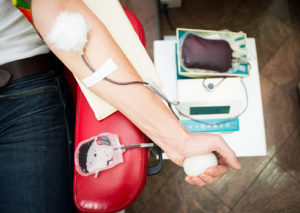In the United States, adolescents 16-18 years old donate approximately 1.5 million units of blood each year. Although donating blood is a relatively safe procedure, about 200-250 milligrams of iron are removed from individuals donating whole blood. This could be particularly problematic for female donors who typically have smaller total blood volumes and also lose blood during menstruation each month. A recent analysis of the 1999-2010 National Health and Nutrition Examination Survey, suggests that both adolescent and adult female blood donors are more likely to have iron deficiency and anemia as compared to those who do not donate. Based on 2,419 female adolescents 16-19 years old of which 10.7% donated blood and 7228 female adults 20-49 years old of which 6.4% donated blood, serum ferritin levels were lower in both adolescent (p<0.001) and adult donors (p<0.001) compared to non-donors. In addition, female adolescent and adult donors were more likely to have depleted iron stores (serum ferritin levels <12 ng/ml) and iron deficiency anemia (serum ferritin levels <26 ng/ml) compared to female non-donors, raising concerns over the long term-consequences of iron deficiency. Further measures to protect female donors from iron deficiency may be needed.
Reference:

